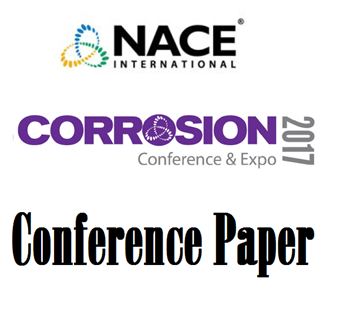Search
Corrosion Monitoring and Control
View as
Sort by
Display
per page
Tungsten Carbide High Velocity Thermal Spray Coatings in the Oil & Gas Industry
Product Number:
51216-006-SG
Publication Date:
2016
$20.00
UHP Water-Jetting and Surface-Tolerante Coatings in New Building Applications
Product Number:
51217-035-SG
Publication Date:
2017
$20.00
Ultra-Low VOC Waterborne Alkyd Coatings with Exceptional Corrosion Resistance
Product Number:
51216-018-SG
Publication Date:
2016
$20.00
Uncertainty in Service Life Estimation and Need for a Probabilistic Approach
Product Number:
51317--9211-SG
ISBN:
9211 2017 CP
Publication Date:
2017
$20.00
Understanding Atmospheric Corrosion Damage On An Aircraft Representative Galvanic Specimen: A Two-Pronged Approach That Combines Modeling With Experimental Measurement
Product Number:
51322-17638-SG
Publication Date:
2022
$20.00
Understanding Effect Of Scribe Method On Variability In Accelerated Corrosion Test Results
Product Number:
51322-17897-SG
Publication Date:
2022
$20.00
Understanding Insulation Chemistry Proven to Inhibit Corrosion Under Insulation (CUI)
Product Number:
51317--8876-SG
ISBN:
8876 2017 CP
Publication Date:
2017
$20.00
Understanding Zinc Rich Primers & Importance of Performance Based Approach Single Coat vs 3 Coat Performance
Product Number:
41210-574-SG
Publication Date:
2010
$20.00
Use of Corrosion Rate Probes to Evaluate Pipeline Cathodic Protection Performance
Product Number:
51317--9180-SG
ISBN:
9180 2017 CP
Publication Date:
2017
$20.00
Use Of The Corrosion Prognostic Health Management (CPHM) System On The Mi-24 Helicopter
Product Number:
51322-17885-SG
Publication Date:
2022
$20.00
Use Of Vapor Phase Corrosion Inhibitor For Tank Bottom Protection
Product Number:
51322-17879-SG
Publication Date:
2022
$20.00
Use of Waterjetting in Conservation of Historic Structures
Product Number:
41205-205-SG
Publication Date:
2005
$20.00












